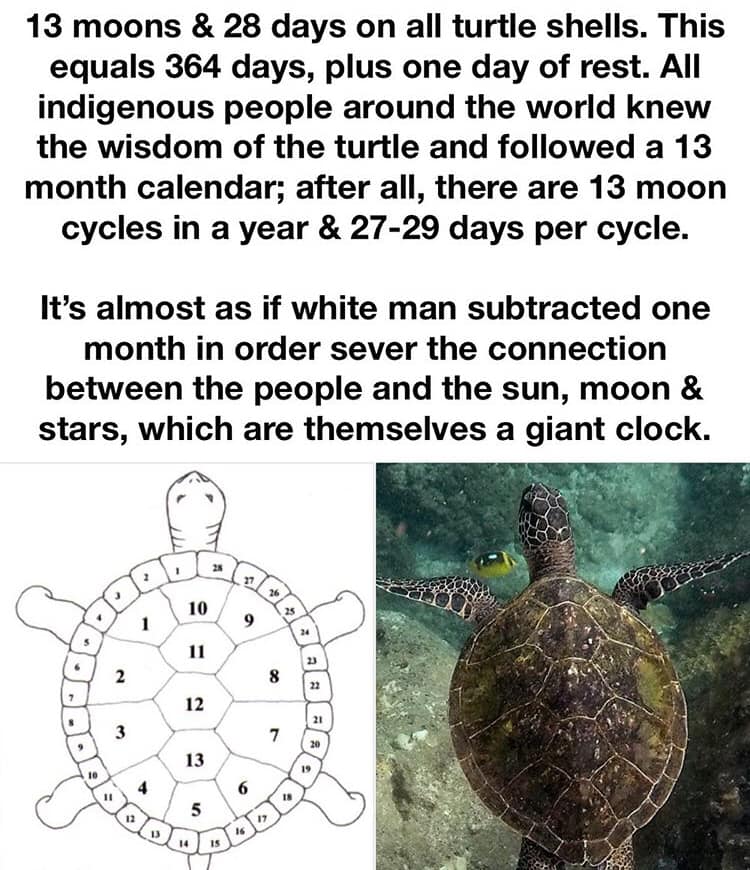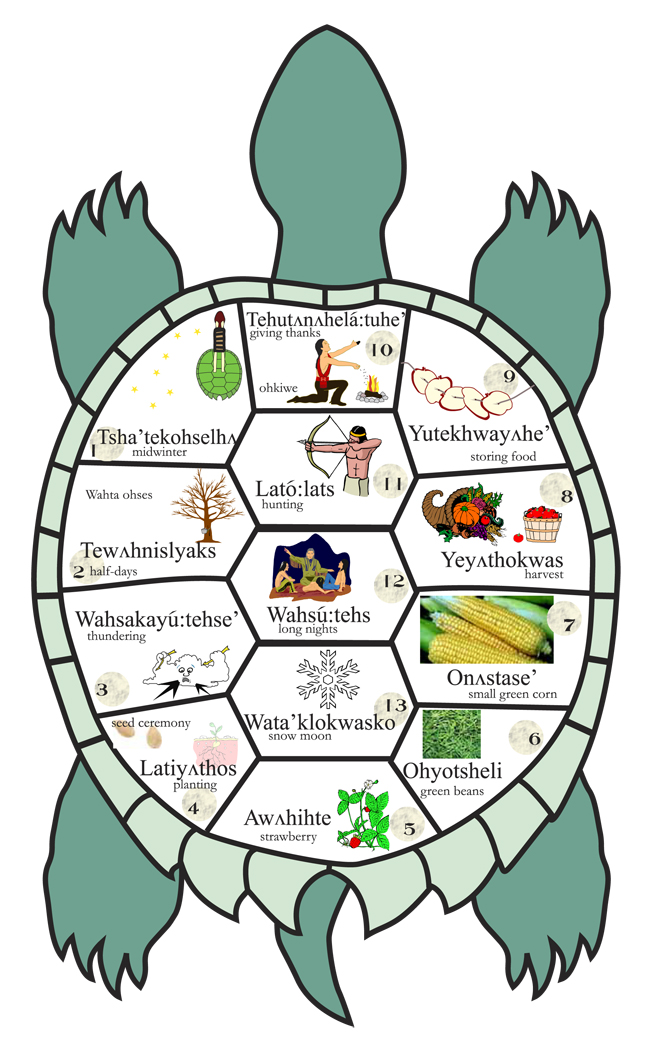 Many Native American people look at Turtle’s back as a sort of calendar, with its pattern of 13 large scales standing for 13 moons in each year. As Grandfather says to a young boy, it reminds us that all things are connected and we must live in balance. Many Native American people look at Turtle’s back as a sort of calendar, with its pattern of 13 large scales standing for 13 moons in each year. As Grandfather says to a young boy, it reminds us that all things are connected and we must live in balance.
Available in hardcover only. Thirteen Moons on Turtle’s Back, by Joseph Bruchac and Jonathan London, with illustrations by Thomas Locker. 1992, 29 pages.
Many Native American people look at Turtle’s back as a sort of calendar, with its pattern of 13 large scales standing for 13 moons in each year. As Grandfather says to Sozap, a young boy in this book’s first story, it reminds us that all things are connected and we must try to live in balance.
In many Native American cultures, each of the 13 moons of the year is said to hold its own story. Turtle holds the mystery of each moon on the shell of its back and gives each moon its power.
From the Potawatomis’ Baby Bear Moon to the Anishinabes’ Maple Sugar Moon to the Lakota Sioux’s Moon When Wolves Run Together, in Native American legend, the natural world is a place of great power where stories help humans understand the mysteries of the earth.
The Native people of North America have always depended upon the natural world for their survival. Watching the changes going on in the natural world with each season, they also look up into the sky and see it changing. In many parts of North America, the Native people relate the cycles of the moon to those seasons. In every year, there are 13 of those moon cycles, each with 28 days from one new moon to the next.
In this collection of poems based on traditional Native stories, Abenaki storyteller and American Book Award recipient Joseph Bruchac collaborates with poet Jonathan London to give voice to the 13 moons of the year and reveal the wonder of the seasons. Spectacular oil paintings by Thomas Locker honor the myths of Native American peoples and the sublime beauty of the land.
Joseph Bruchac is a storyteller, poet, and publisher, and much of his writing draws on his Native American and European heritage. He believes that poetry and storytelling are natural to human beings. His poems and stories have appeared in more than four hundred magazines and anthologies.
Publisher: Philomel Books
Culture Groups: Abenaki, Northern Cheyenne, Potawatomi, Anishinabe, Cree, Huron, Seneca, Pomo, Menominee, Micmac, Cherokee, Winnebago, Lakota Sioux, Abenaki http://oyate.org/.../682-thirteen-moons-on-turtle-s-back...
 The turtle’s back is a significant symbol used in Iroquoian traditions. It represents the creation of Turtle Island also known as the continent of North America, on the turtle’s back or more accurately the “Earth Grasper”, from their Creation Story. A closer look will reveal a pattern of thirteen individual segments on his back which represent each moon of the Iroquoian cycle of seasons. These segments are named according to seasonal practices and natural environmental occurrences e.g. Green Corn, Harvest etc. The turtle’s back is a significant symbol used in Iroquoian traditions. It represents the creation of Turtle Island also known as the continent of North America, on the turtle’s back or more accurately the “Earth Grasper”, from their Creation Story. A closer look will reveal a pattern of thirteen individual segments on his back which represent each moon of the Iroquoian cycle of seasons. These segments are named according to seasonal practices and natural environmental occurrences e.g. Green Corn, Harvest etc.
Further to this there are twenty-eight platelets which form an edging around the shell. This is the number of days in the moon cycle.
Source: Oneida Language and Culture
This “calendar” is a natural anomaly given to the native people of Turtle Island to remind them of their connection to Mother Earth and that we are not only connected as one people, but we are connected to the natural forces of above and below (Heaven or celestial bodies and Earth).
|